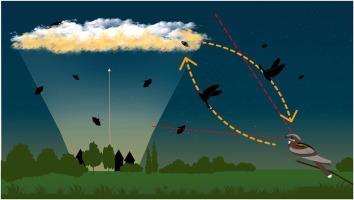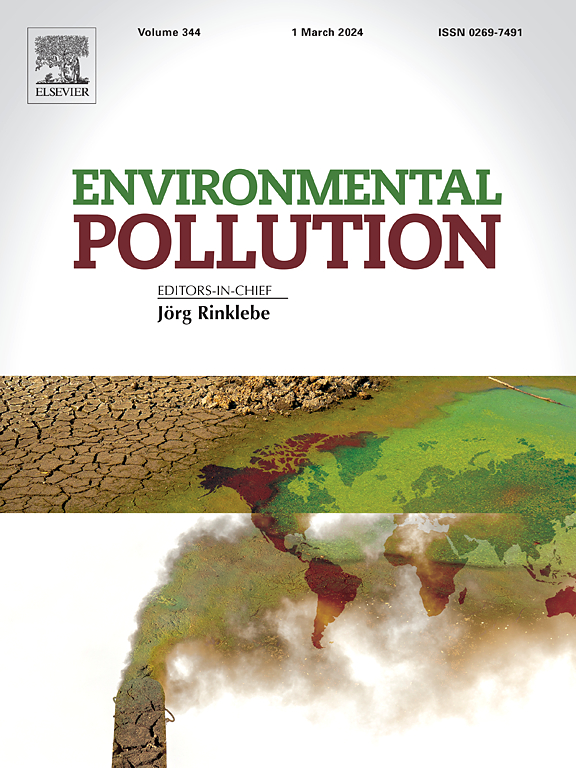Skyglow facilitates prey detection in a crepuscular insectivore: Distant light sources create bright skies
IF 7.6
2区 环境科学与生态学
Q1 ENVIRONMENTAL SCIENCES
引用次数: 0
Abstract
Light profoundly shapes ecosystems, influencing the behaviour and niche specialisation of many species. This is especially true for visual predators, particularly crepuscular and nocturnal animals, whose foraging depends on adequate illumination. Despite this, research on how animals perceive light sources and position themselves relative to these sources is scarce. Using a modified dead-reckoning protocol based on GPS, accelerometer, and magnetic compass data, we investigated the body orientation of foraging European Nightjars (Caprimulgus europaeus, hereafter nightjar) to determine their line of sight relative to bright sections of the nocturnal sky, created by natural or artificial light.
We found that nightjars are more likely to align themselves with brighter sections of the sky, although not necessarily with the brightest patch. On full moon nights, they positioned the moon within their line of sight when it was low on the horizon, but this likelihood decreased as the moon rose higher. During other moon phases, the likelihood of having the moon within line of sight increased linearly with moon altitude. During moonless parts of the night, nightjars appeared to use skyglow as a background for prey detection, but only when it was sufficiently bright. When both moonlight and skyglow were present, nightjars showed a preference for moonlight.
This study shows that European Nightjars use illuminated sections of the sky, including skyglow, as bright backgrounds to detect flying prey. This suggests that, in the absence of the moon, nightjars can actively take advantage of this form of light pollution while foraging. However, the success of their hunting under skyglow-induced lighting remains unclear. We hypothesise that the effectiveness of these backgrounds depends on their brightness and colour composition. Further research is needed to better understand the complex dynamics of contrast detection under varying lighting conditions.


求助全文
约1分钟内获得全文
求助全文
来源期刊

Environmental Pollution
环境科学-环境科学
CiteScore
16.00
自引率
6.70%
发文量
2082
审稿时长
2.9 months
期刊介绍:
Environmental Pollution is an international peer-reviewed journal that publishes high-quality research papers and review articles covering all aspects of environmental pollution and its impacts on ecosystems and human health.
Subject areas include, but are not limited to:
• Sources and occurrences of pollutants that are clearly defined and measured in environmental compartments, food and food-related items, and human bodies;
• Interlinks between contaminant exposure and biological, ecological, and human health effects, including those of climate change;
• Contaminants of emerging concerns (including but not limited to antibiotic resistant microorganisms or genes, microplastics/nanoplastics, electronic wastes, light, and noise) and/or their biological, ecological, or human health effects;
• Laboratory and field studies on the remediation/mitigation of environmental pollution via new techniques and with clear links to biological, ecological, or human health effects;
• Modeling of pollution processes, patterns, or trends that is of clear environmental and/or human health interest;
• New techniques that measure and examine environmental occurrences, transport, behavior, and effects of pollutants within the environment or the laboratory, provided that they can be clearly used to address problems within regional or global environmental compartments.
 求助内容:
求助内容: 应助结果提醒方式:
应助结果提醒方式:


